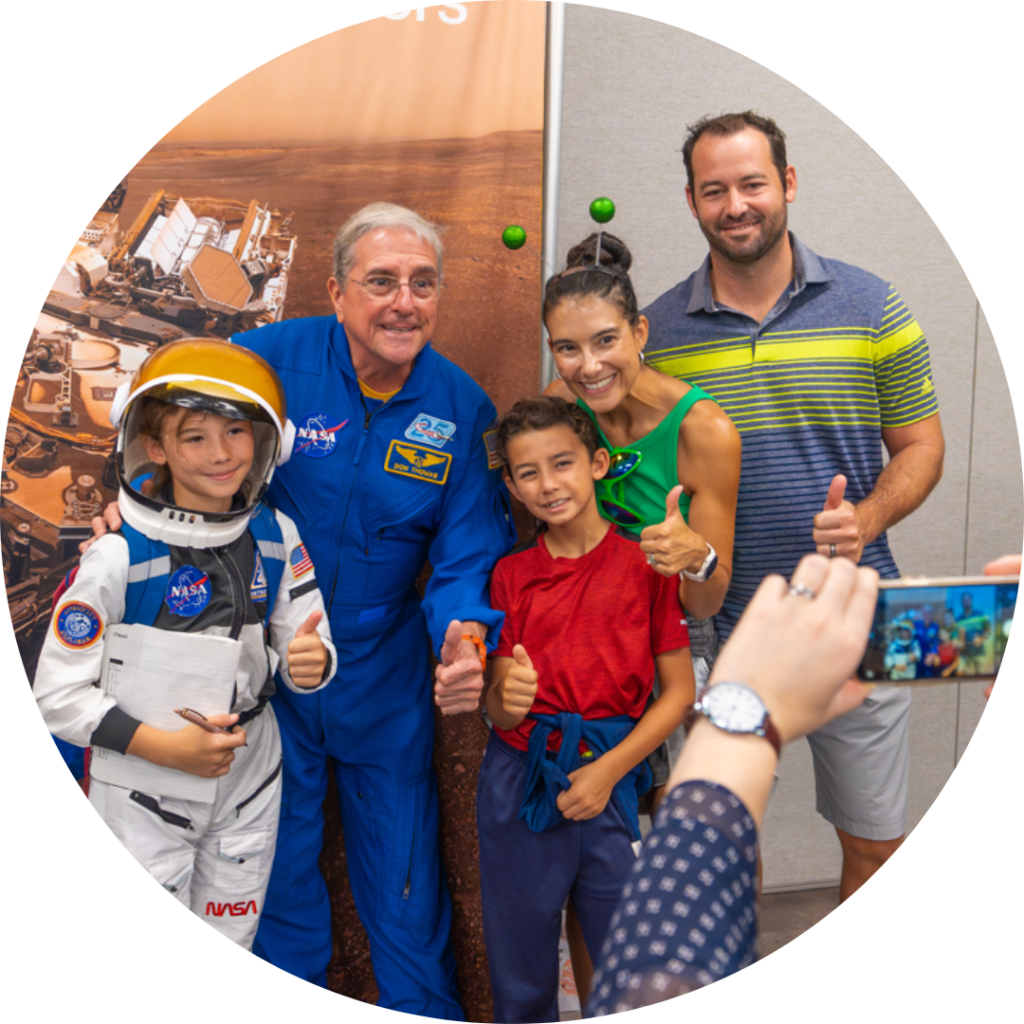[sp name=’Surigae’]
On April 22, 1970, the world marked the first Earth Day. To celebrate, we’re sharing amazing images of Earth from space! Solve Space by unscrambling this Image of the Day for April 20, 2021 of the Surigae super typhoon churning in the Western Pacific Ocean. Then learn all about how you can celebrate Earth Day at Space Center Houston!
Learn More About It
- This image is courtesy of NASA’s Earth Observatory. The infrared satellite image was acquired at midday on April 19 with the Visible Infrared Imaging Radiometer Suite (VIIRS) on NOAA-20. Learn more about Surigae.
- The super typhoon reached extreme intensity earlier in the year than any storm in the satellite era.
- Surigae (known as Bising in the Philippines) is the first typhoon of the 2021 season in the northwest Pacific and the second named storm.
- It rapidly intensified to category 5 strength with sustained winds of 165 knots (190 miles/305 kilometers per hour).
- According to the Japan Meteorological Agency, the central pressure inside the storm dropped to 895 millibars, one of the lowest readings ever recorded.
- The typhoon is expected to curve and stay offshore, but its outer bands have been lashing the central and northern Philippine islands with heavy rain, gusty winds, and coastal flooding.
- Climate change is generally accepted as affecting storms and their intensity. Evidence from satellites, aircraft, ground measurements and climate model projections are increasingly drawing connections between extreme weather and climate change.
- What does NASA research have to say about extreme storms? One NASA study from late 2018 supports the notion that global warming is causing the number of extreme storms to increase, at least over Earth’s tropical oceans (between 30 degrees North and South of the equator).
- Joao Teixeira, co-director of the Center for Climate Sciences at NASA’s Jet Propulsion Laboratory in Pasadena, California, says, “Within the scientific community it’s a relatively well-accepted fact that as global temperatures increase, extreme precipitation will very likely increase as well.”
- The Atmospheric Infrared Sounder (AIRS) instrument on NASA’s Aqua satellite can measure the temperature of clouds with extraordinary accuracy and stability. Its data can also be correlated with other climate variables such as sea surface temperatures (SSTs), for which scientists maintain long data records.
Experience More
Join us at our Planet Earth Celebration April 22-25, where you can:
- Experience NASA’s sustainability efforts — from flora to fauna and even rockets! — on the Wildlife Refuge Tram Tour. Learn more about sustainable and reusable rockets at our Pop-up Science Talks, then put it into action at our Pop-up Science Labs!
- Visit Community Educational Booths and learn about our wetlands and coastline, as well as recycling. Discover live information about our atmosphere at the daily Atmospheric Balloon Launch.
- Take a fun break and play games such as Cornhole, Jenga, Connect 4, or watch a special film.
- Best of all, learn about our recycling and energy-saving initiatives, plus what today’s inventors are creating for tomorrow at the Innovation Gateway Challenge!




